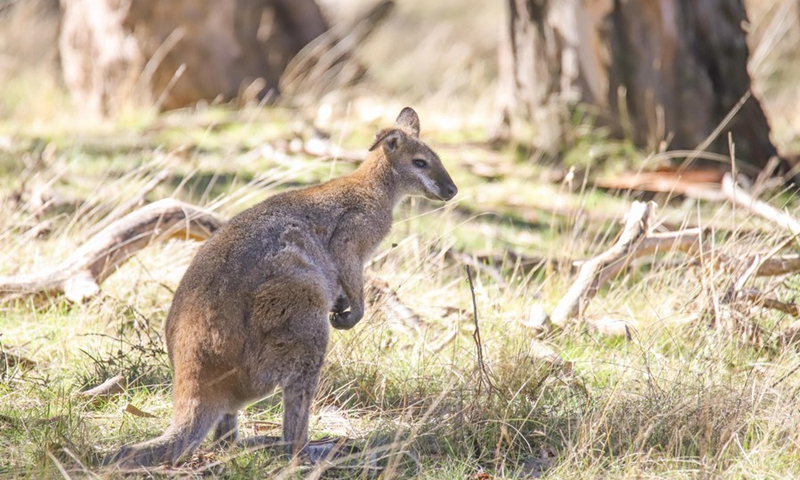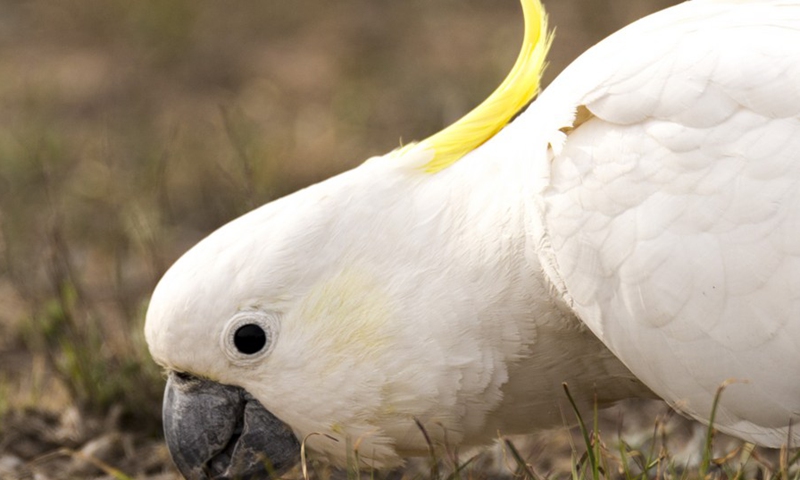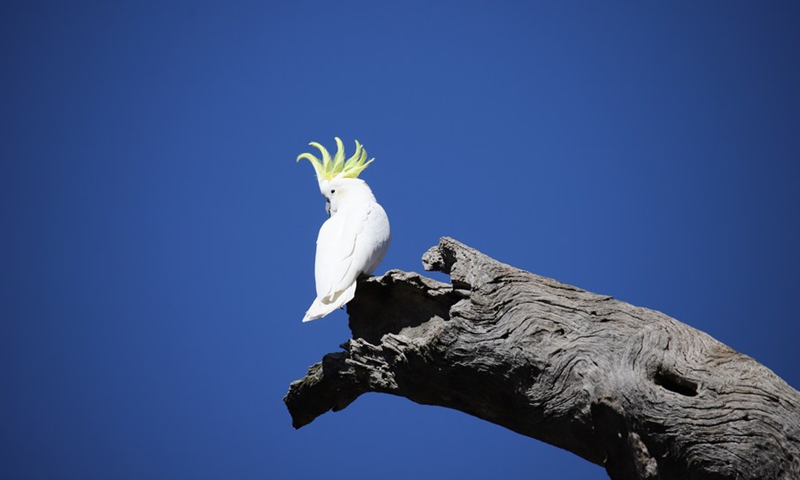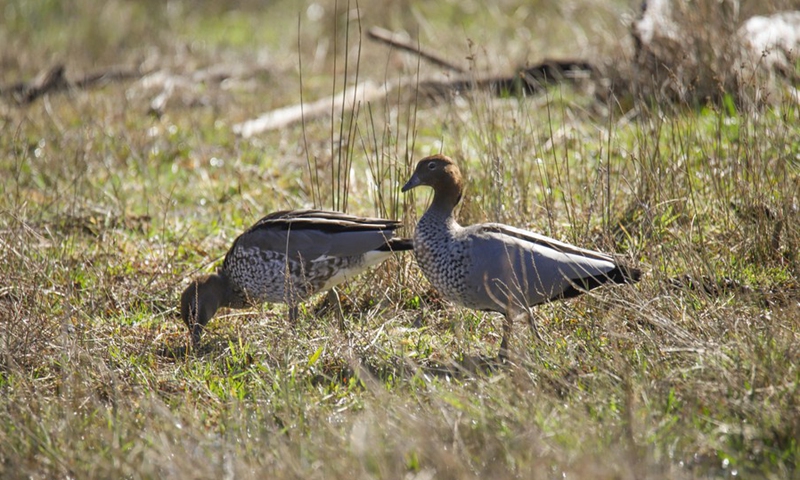
Photo taken on Aug. 12, 2021 shows a kangaroo in the Mulligans Flat Nature Reserve in Canberra, Australia.(Photo: Xinhua)

Photo taken on Aug. 12, 2021 shows a sulphur-crested cockatoo in the Mulligans Flat Nature Reserve in Canberra, Australia.(Photo: Xinhua)

Photo taken on Aug. 12, 2021 shows a sulphur-crested cockatoo in the Mulligans Flat Nature Reserve in Canberra, Australia.(Photo: Xinhua)

Photo taken on Aug. 12, 2021 shows two ducks walking in the Mulligans Flat Nature Reserve in Canberra, Australia.(Photo: Xinhua)
One echidna. Two echidnas. Three, four echidnas in a row, wobbling like a train.
This is a video footage posted by Millie Sutherland Saines on her Twitter account, which showed a typical behavior of the animal in its mating season. An ecologist and outreach manager at the Mulligans Flat Nature Reserve in the Australian capital Canberra, she was glad to see that, while spring is coming, the reserve becomes lively again.
The Mulligans Flat Nature Reserve, located on the northeastern border of the Australian Capital Territory (ACT), covers approximately 750 hectares of land.
Sutherland Saines told Xinhua that there were protected species including about 70 quolls, 50 echidnas and more than 100 eastern bettongs.
"Part of what we're trying to do at Mulligans flat is putting back together the puzzle of this area," she said.
She could be talkative at the topic of animals, identifying now and then various types of birds from their sound, like kookaburra, superb parrot and bush stone-curlew which got nicknamed the murder bird because it sounds like a woman screaming.
"Over many years, mostly since the Europeans have come here the last 200 years, lots of pieces of the puzzle have disappeared. The ecosystem isn't functioning as well as it once was when it was all intact," she continued. "So we have brought back some animals that are missing pieces of the puzzle, and by also supporting and protecting this area, some animals will be naturally coming back."
Mulligans flat became a nature reserve in 1995.
Sutherland Saines said that in 2009, they erected big fence around the reserve to keep out feral animals, including cats, red foxes and rabbits. "These three animals have caused the extinction of a lot of native Australian species," she said.
The fence was tall with a floppy top to prevent cats from climbing in. The double mesh section at the bottom was designed to keep baby rabbits out. And the curves out on the ground aimed to stop foxes and rabbits digging and getting in.
There were about 60 volunteers working at the reserve, whose works include weeding, fixing the fences, counting the animals, closing the gate that was left open by visitors, etc. During the drought period, they brought water for the animals.
"Most of the stuff that they do is maintenance work rather than active planting and things like that," said Sutherland Saines. She noted that animals like bettong could create pockets in the soil which seeds can fall into, while some birds could also help planting in a similar way.
By observing behaviors of animals she knew well the impact of climate change.
"For instance, there's this bird called crested pigeon. They're a desert species of birds originally, but because climate change has been happening for the last 30 or 40 years, they're quite common and you see them all the time in the ACT even when it's really cold here," she said.
"We are seeing a change in the animals that are living here. What about the animals that are already here? Are they being pushed out?"
Disasters caused by climate change also affected the animals.
Although the bushfires between 2019 and 2020 didn't spread to Mulligans Flat, some animals like the turtles had a real issue with the heavy smoke during the worst days. "They couldn't sink down in the water as they did," she recalled. "So we have to take quite a few of the turtles into care."
Therefore, she called on people to take more action so as to protect the environment and animals.
"Biodiversity is very important," Sutherland Saines said. She talked about a species of funnel-web spider, whose venom was being studies for medical use. "If that spider had gone extinct, we would never know that that venom could potentially one day be a cancer cure."
"We just need to change our thinking and respect the animals that we have around us," she added.
The ecologist believed that every one could do his bit to protect the ecosystem.
"Creating proper habitats for the local animals," she said. "If you have a garden, plant native plants. That will attract native birds and insects, and potentially some reptiles."
Besides, she said that people should refrain from using cars for short-distance ride. Instead, she encouraged people to walk or ride bikes.
"Those small changes do make a really big impact," Sutherland Saines concluded. "Your own actions affect the atmosphere in your area. That will make a big difference if we're all thinking about this."
